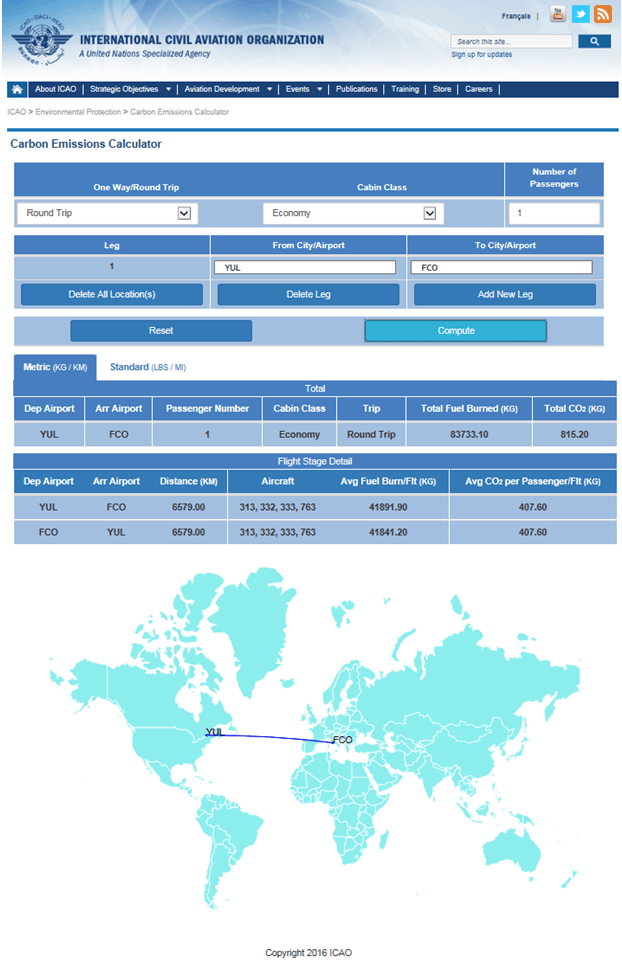The volatile aviation environment and climate change have become global priorities as States, industry, academia and environmentalists consider the impact of aviation on the environment, and the significant regional and seasonal variations.
With the current trends, International Civil Aviation Organization’s (ICAO) Carbon Calculator for passenger air travel emissions is a popular tool that has been developed by ICAO. It allows passengers to estimate the emissions attributed to their air travel. It is simple to use and only requires a limited amount of information from the user. To complement the ICAO Carbon Calculator for passenger air travel emissions, during the Committee on Aviation Environmental Protection (CAEP)/10 meeting that was held early in 2016, CAEP recommended a methodology to quantify air cargo CO2 emissions. This new methodology will predict the CO2 emissions from cargo that is shipped on board both passenger and dedicated cargo aircraft. This tool will only require information such as origin and destination.

The Committee on Aviation Environmental Protection (CAEP) is the only technical committee of the ICAO Council. Its mandate is to study and develop proposals to minimize aviation’s effects on the environment. It was established in 1983, superseding the Committee on Aircraft Noise and the Committee on Aircraft Engine Emissions.
Every three years, CAEP develops an analysis of environmental trends in aviation to include: Aircraft Emissions that affect the Global Climate; Aircraft Noise; and Aircraft Emissions that affect Local Air Quality (LAQ). CAEP uses the latest input data and related assumptions to assess the present and future impact and trends of aircraft noise and aircraft engine emissions. During the CAEP/10 meeting, CAEP developed an updated set of trends and it was recommended that these be the basis for decision-making on matters related to the environment during the 39th ICAO Assembly. Further information on the Environmental Trends in Aviation to 2050 can be found in Chapter 1 of this Environmental Report.
The Committee on Aviation Environmental Protection is composed of 24 Members from all regions of the world, as well as 15 Observers. Over 600 internationally renowned experts are involved in CAEP activities and working groups. All of its proposals for example, measures to minimize noise and emissions, are assessed on the basis of four criteria: technical feasibility, environmental benefit, economic reasonableness, and interdependencies.
